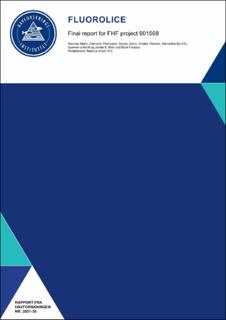| dc.description.abstract | Salmon lice ( Lepeophtheirus salmonis ) represent a substantial obstacle for the sustainability of salmon farming (Torrissen, et al. 2013; Vollset, et al. 2018). As such, there are many avenues of research that aim to improve understanding of lice biology and ecology in order to combat the epidemic or predict the distribution of infective larvae. The latter remains increasingly important as passive non-chemical prevention measures, comprising cage structure modifications or new technologies (Grøntvedt, et al. 2015; Oppedal, et al. 2017; Stien, et al. 2018), become increasingly favored. Many of these technological innovations (e.g. skirts, snorkel cages, submerged cages, depth position of feeding and artificial lights) as well as area management and site locations are founded on knowledge of vertical and horizontal distribution of sea lice larvae. Understanding the fluctuations in abundance and behavior of lice larvae is also required to develop predictive tools to assist farmers in management of preventative measures, as well as for validating models of larval dispersion which in turn can be used for area management and choice of production site locations. However, larval distribution (both spatially and temporally) is heavily influenced by factors such as environmental conditions ( e.g . temperature, salinity, and light), hydrodynamics, connectivity between farms, and natural mortality (Kristoffersen, et al. 2014; Johnsen, et al. 2016; Samsing, et al. 2016; Brooker, et al. 2018). Addressing these parameters in the field requires enumeration of salmon lice larvae in complex plankton samples. Furthermore, to answer questions about larval distribution, large numbers of plankton samples are required to be processed (Nelson, et al. 2017). The ability to meet the desire for knowledge on the planktonic distribution of salmon lice has hitherto been restrained by the resource intensive effort required to identify copepodids in a plankton sample (Bui, et al. 2021). To circumvent this, indirect methods of enumerating lice abundance in coastal waters have been attempted, including assessment of site-specific lice abundance in farms (Jansen, et al. 2012), use of sentinel cages (Bjorn, et al. 2011), and enumeration of lice abundance on migrating wild salmonids (Serra-Llinares, et al. 2014). Ultimately, these approaches operate by using lice on fish as a proxy and do not fill the knowledge gap concerning actual planktonic abundance of sea lice larvae. | |
